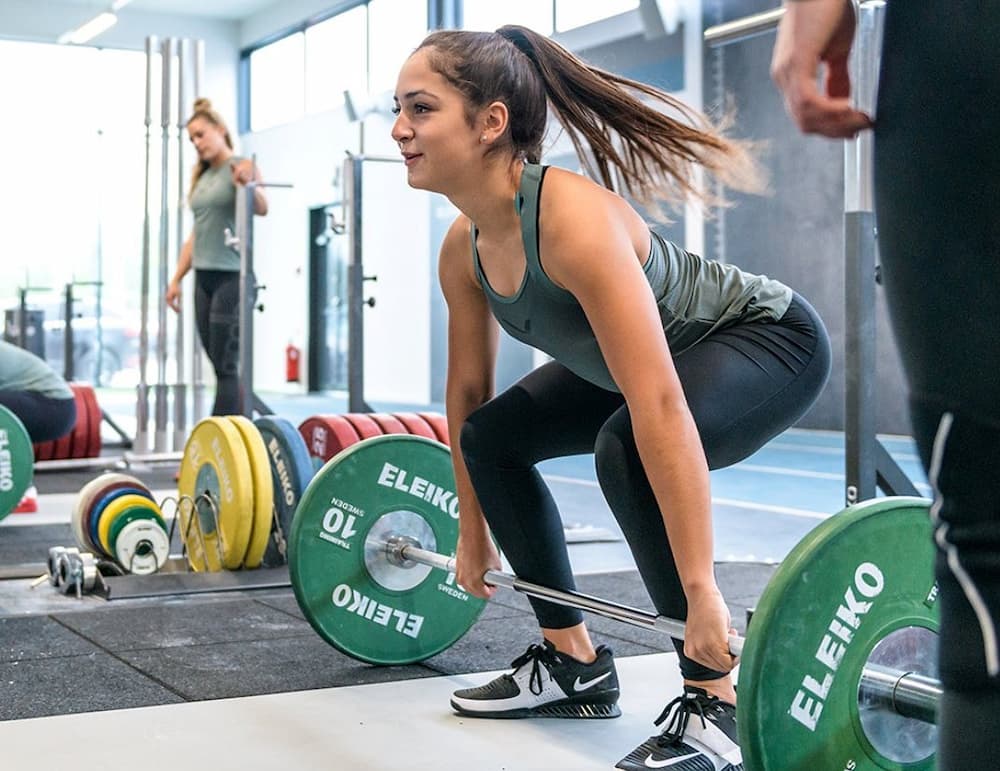
Categories
Should Women Lift Weights?
Weights aren’t just for powerlifters and strong men. Strength training keeps us structurally sound and underpins all other physical activities – whether you’re in the gym, running around after your kids or sitting at a desk all week long.
In fact, in today’s sedentary environment – when most of us suffer with bad posture or back pain – we would all benefit from a bit of strength training – especially so as we age and as muscle mass decreases and we become pray to structural issues such as osteoporosis and arthritis.
And then of course, there are the numerous extra benefits of weight work for anyone who is in training – being stronger means that we are able to exercise harder and faster for longer, and are less prone to injury.
Five key lessons in strength training:
Balance the body: We are never going to achieve perfect symmetry; that’s not the goal. But we all have imbalances throughout the body and we need to work towards developing structural balance, beginners especially. Think single leg exercises, specific core activation or strengthening work, and lots of shoulder and hip mobility or stability. What we do will depend on our individual strengths and weaknesses, but we should all make structural balance the cornerstone of our programme.
Stick to basics: Whilst fun and variety are important in exercise, we don’t actually need too many different workouts to get us to where we want to be – quite the opposite in fact. It doesn’t sound appealing, but in reality making basic movements the core of our programme and doing them again and again until we know them well should be the foundation of any good strength training programme. Forget the latest fads and celebrity workouts; instead get a solid base of movement and technique that you can build upon, adding new exercises over time.
Prioritise technique: Spending the time to develop good technique is the single most important thing that we can do when we start strength training. Ignoring this and reinforcing poor form over and over again will make life a lot harder a few months down the line, plus, it’s likely to lead to injury. Resist the temptation to just make it ‘hard work’ by doing countless reps at high speed with sloppy form, and instead be patient and take time to learn the basics well, and you’ll get to your goal faster.
Prioritise free weights over machines: Machines are useful in rehabilitation and specific muscle groups, but most of us should stick to free weights. By using free weights, we engage more muscles as our body works hard to stabilise the weight as we lift it. This actually makes us systemically strong, rather than just developed in certain areas, which can lead to imbalance and injury.
Park the circuits: Circuit training and other increasingly popular forms of intense interval training work wonders for fat loss, but come with increased risk of injury, especially if our technique is not solid. Before we wade into high repetition – low rest approaches to training, we need to make sure that we are familiar with the movements and exercises.
Once the mind-muscle connection is developed, we can throw ourselves into more intense workouts, as we no longer need to worry about technique, that’s fixed, and we can concentrate on pushing ourselves.
It is important that we are familiar with movements before you speed them up when you’re fatigued, especially in the long term.
If you have any questions on the above or would like some advice on women’s personal fitness on how we could help you, don’t hesitate, visit one of our personal training gyms – we would love to hear from you.
Related Articles
- Training Tips for Women
- 7 Reasons Women Should Strength Train
- Women’s Fitness Training – Shifting the Focus
- How Do Men and Women React Differently to Exercise?
- Women’s Personal Fitness Training in Richmond


